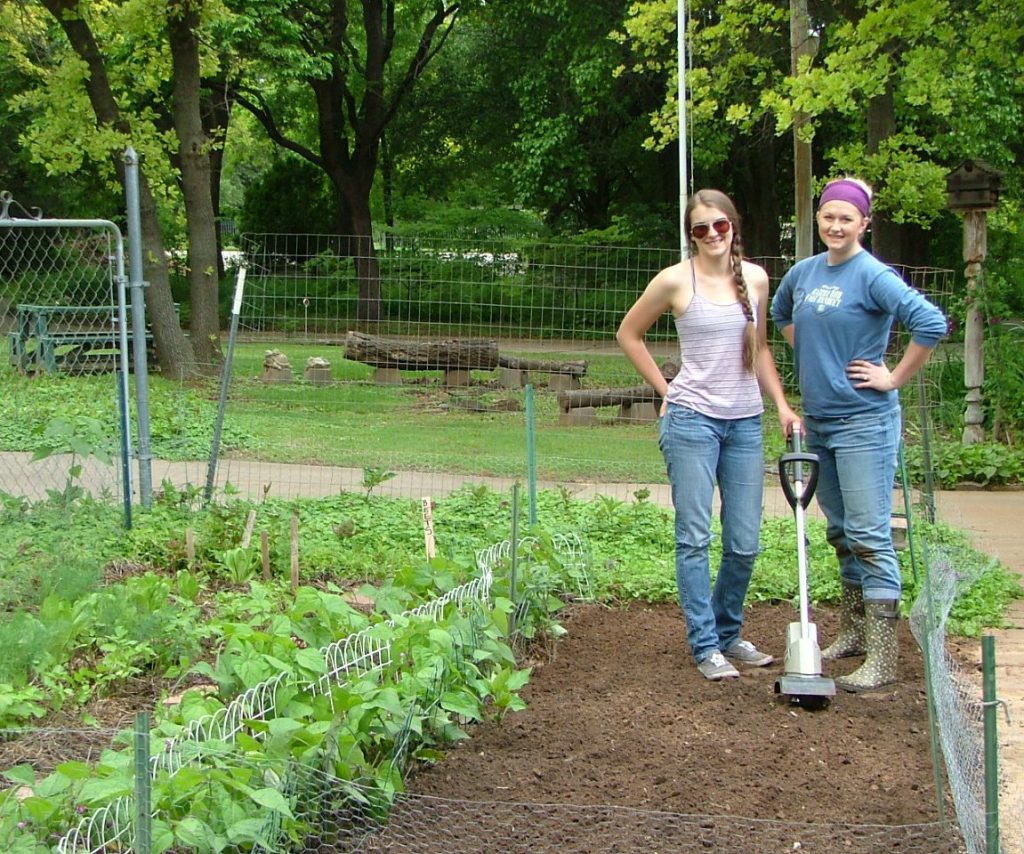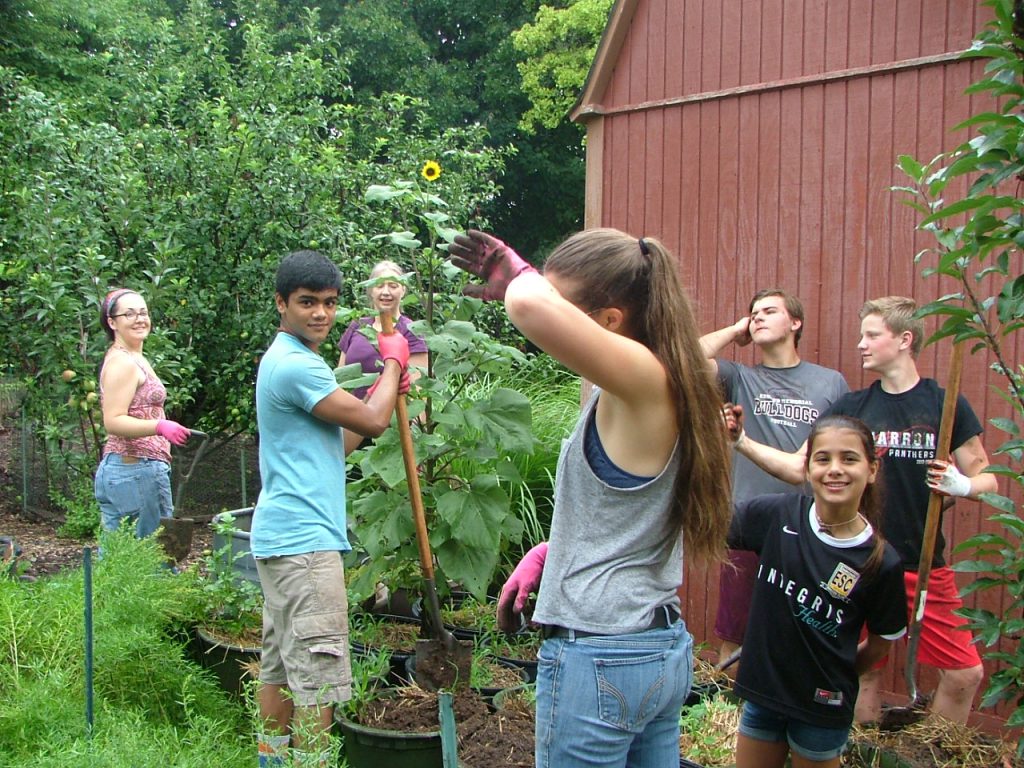Have you ever wondered about how U-Pick farms work? Here’s a fun and informative Q & A with Anaswara, our expert U-Pick farmer who shares her years of expertise in U-pick farming.
Q 1. What is an organic U-Pick farm?

On an organic U-Pick picking farm, participants pick their own produce. They learn how to recognize and harvest their own produce instead of receiving a CSA box each week. A picking farm is a form of Community Supported Agriculture. CSA’s usually deliver a box of food to families once a week. Many consumers in a regular CSA feel they get too much of some produce and not enough of others, and it’s sometimes wilted. With our organic picking farm, everyone harvests only what they want and need. The freshest produce is available at its nutritional peak. Pickers understand they pick only for their family and produce is for immediate consumption, not for canning, freezing, or drying. Our pickers have been very conscious and honest. If one cares about eating healthy food, perhaps one is more likely to be ethical and fair.
U-pick farming is the hope for the future for small farmers. On a picking farm, participants pay for a year in advance and then come to pick when it’s convenient for them. This gives the small farmer start-up money to buy seed and hire help to plant and tend the veggies.

All my farmer friends told me this wouldn’t work, and it has worked beautifully. People treat the crops with care. They so enjoy being in nature and picking their own food.
An organic picking farm can be done on a small scale as well. Even if your home’s backyard only has a few beds you could start with one or two friends as your pickers. Or, 3 friends could join and each grow a different crop in their small backyards to share with the other two friends. One could grow produce, the second herbs and berries, and the third fruit trees to share with one another. All sorts of growing and sharing combinations are possible. Pray and follow Amma’s guidance to grow your own organic food. Amma will guide you.
Q 2. How does your picking farm work?

We advertise our picking farm with the flyer shown here. The families who come on our farm tours receive a flyer. Our friends also hand out flyers for us at the Farmers Market.
Turtle Barn Organic Farm has a big bulletin board on the farm at our pickers table. There is a layout chart of the farm beds. The beds are numbered on the chart and on a corresponding number on a tall stick in the bed. As crops mature and are ready to pick, I list the crop and its bed number. I write any harvesting information needed on our clipboard that pickers take with them when they pick. I also place a tall stake with the vegetable name and a long pink fluorescent ribbon on the markers where the crop is located. That way it is easy for families to find the vegetables when they are ripe.

I guide and go with new pickers until they are comfortable harvesting alone and am available if they need coaching by phone. Pickers fill out a Picking inventory sheet each time they pick. I use the Picking inventory as a guide to what and how much to plant each year. Pickers weigh produce and estimate herbs in handfuls.
Pickers pay me for the whole year in advance which comes out to about $9. a week for organic produce and herbs. Since most herbs are perennials, I often have extra volunteer herb plants they can adopt and take home to start their own herb gardens, especially the cilantro and mints.
Q 3. Do I do all the farming myself?
No, Turtle Barn Farm has about an acre under cultivation. At this size, it is way too much for one person to keep up.
So, how do I find farm crews and helpers for the farm? There are several avenues we have explored. We first started with friends.

When I began, Don, a 70-year-old man who lives in our garage apartment, and I did all the planting. I was in my 50’s and he was in his 70’s. Now I’m 76 and he’s in his 90’s. My husband had a full time environmental career, so on weekends, he took care of anything weighing over 40 pounds. Don and I took care of the rest. I quickly learned the importance of support and farm crews for the farm.
I’ve had apprentices who paid me to teach them. I’ve mentored many young adults
who want to grow their own produce. They are eager to learn from someone who has had more experience.
A vocational training High School wanted students to learn organic farming. For many years they brought 15 students out to the farm for 2 hours each week to help create new beds. A lot can be accomplished with 30 hours of farm crew each week! They helped with planting and I taught them organic methods. We do only a little shallow tilling, so most of our digging is by hand, as is seeding and weeding. The students learned a lot and helped us a lot!
I feel we are helping youth learn some gardening skills that will be useful for them in the future and hopefully become our next farmers. Students are making connections with nature on our farm that don’t seem to be happening in their biology class. For example, Harrison, a bright senior in engineering, was amazed to learn that each flower on strawberry plants and apple trees had the potential to become a fruit. He was astonished that adding beehives to our farm increased our crop’s production by almost 50%.
Check out this news article with video about TBF Farm and how adding our roof top Bee hives increased our produce production by almost 50%
Urban beehives spell sweet success for backyard gardens in OKC (oklahoman.com)
We found many others in the community who wanted to engage in farming. We’ve hired farm crews at Universities, High schools, Junior high schools, Agricultural and Vocational training schools, youth in farm clubs like 4-H, scout groups, International Student organizations, our local Boys Home, churches, and the Hindu Temple. We even had UPS and Amazon Drivers as part of our farm crew!

I’ve had Amma friends stay with us from 1-6 weeks and help on the farm for their room and board. If you have room for someone to live with you, and are willing to provide their meals, there are international agriculture groups who will match you with someone who wants to learn what you have to teach for a few weeks or months. Betty, an Amma friend, has an herb farm and has used several different international agricultural groups for years. She’s had many successful apprentices work on her farm and visit us and work on our farm.
I like to schedule farm crews one day a week and prefer having 2 to 4 workers come for 3 to 4 hours at a time. After the farm crew finishes for the day, I give them a begging bowl and we each go beg and pick our lunch from the farm. Our farm crew lunches create community and allow for so many interesting conversations with people from so many ages and backgrounds.
After our final fall harvest, we celebrate with a campfire cookout and singing around the campfire. Amma tells us to make every day a celebration. We’ve created a mini global village with what Amma refers to as Unity in Diversity.


